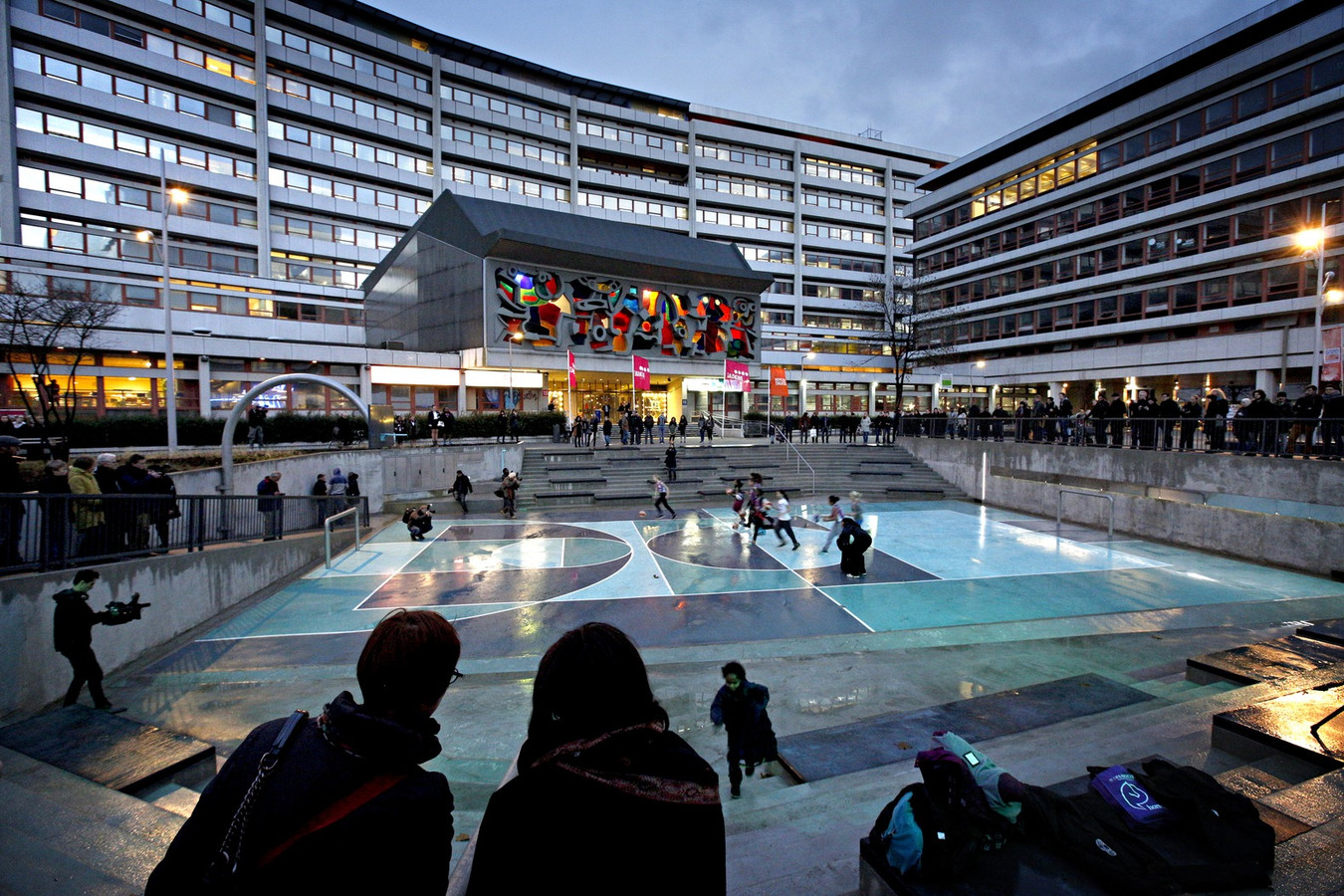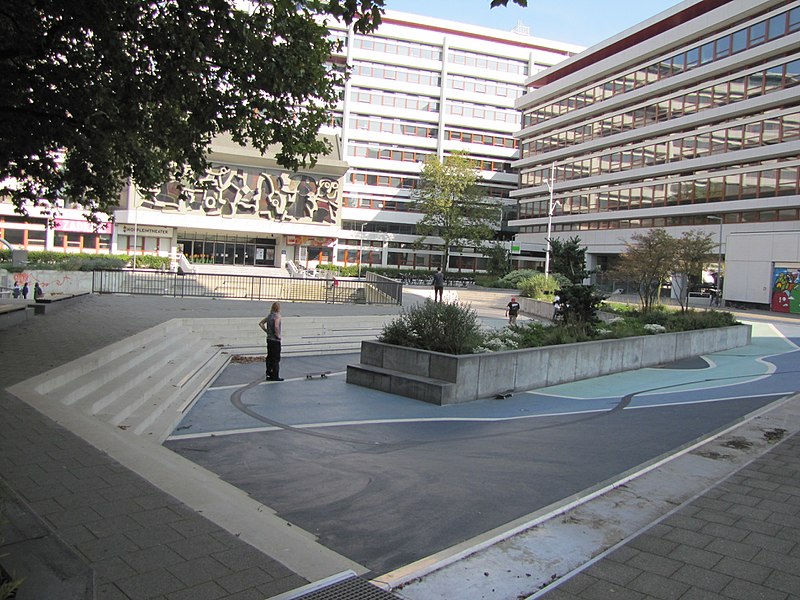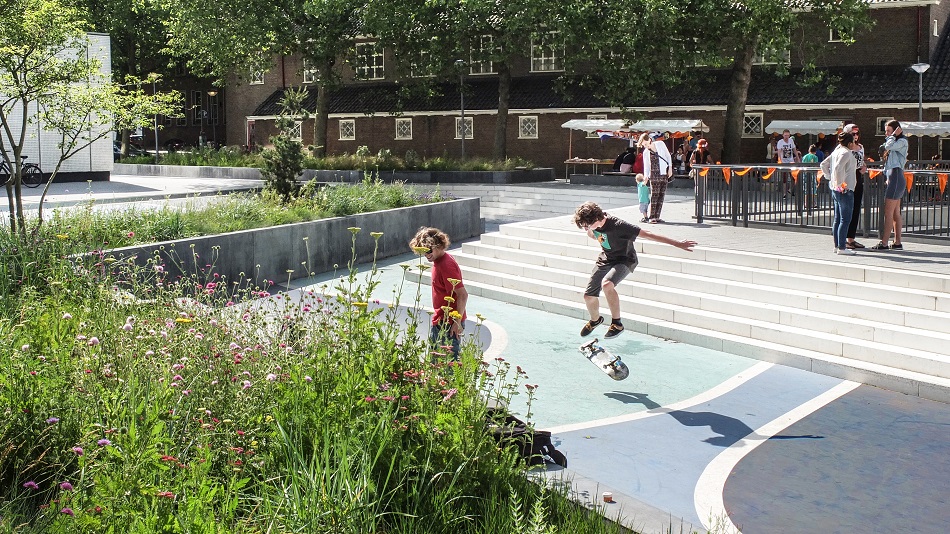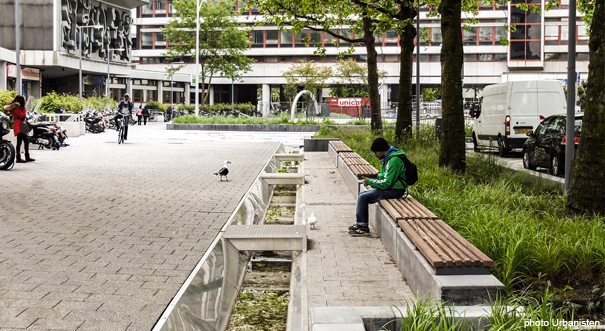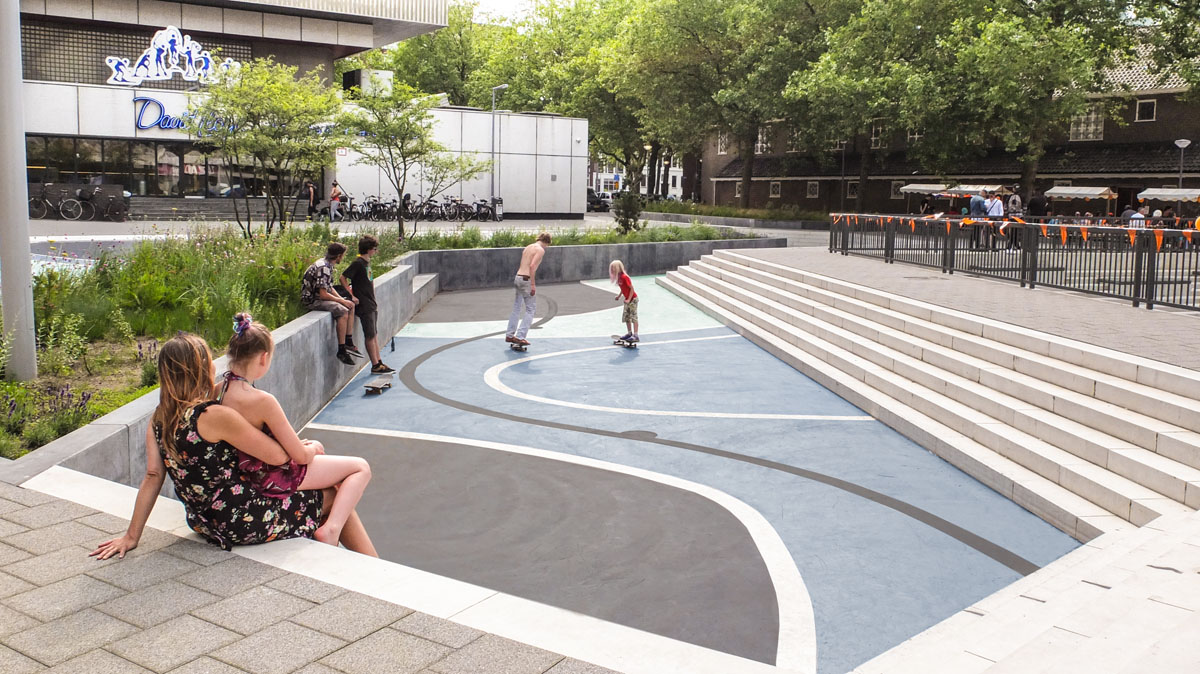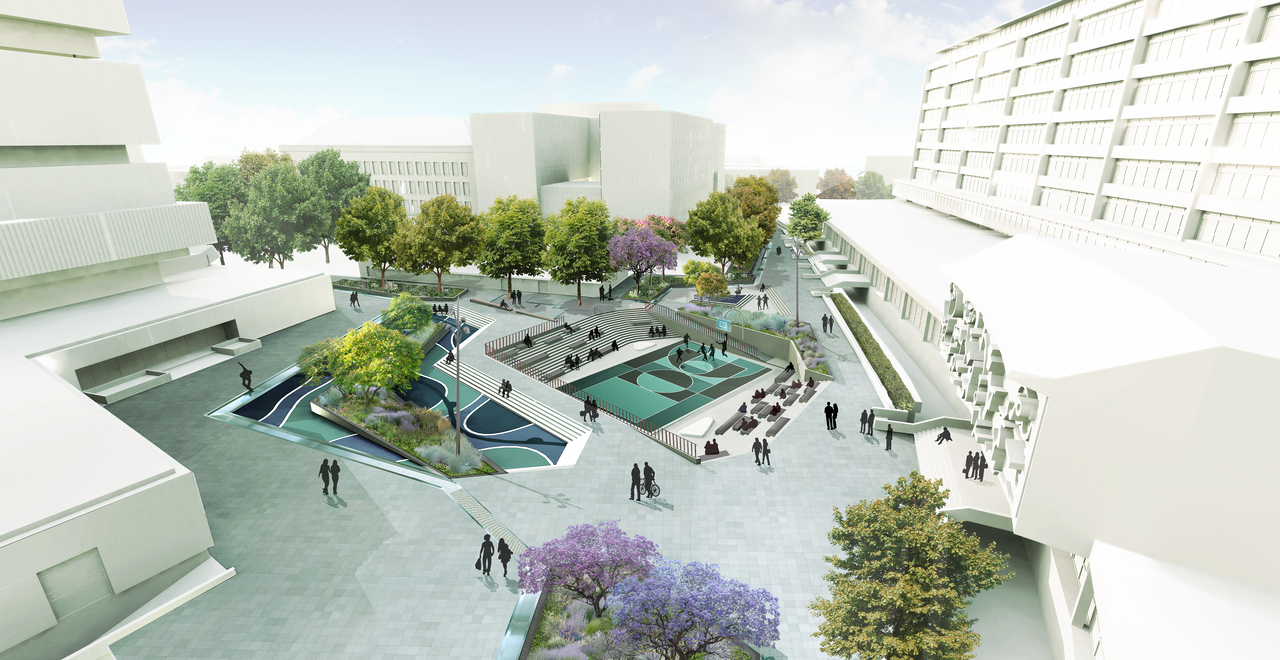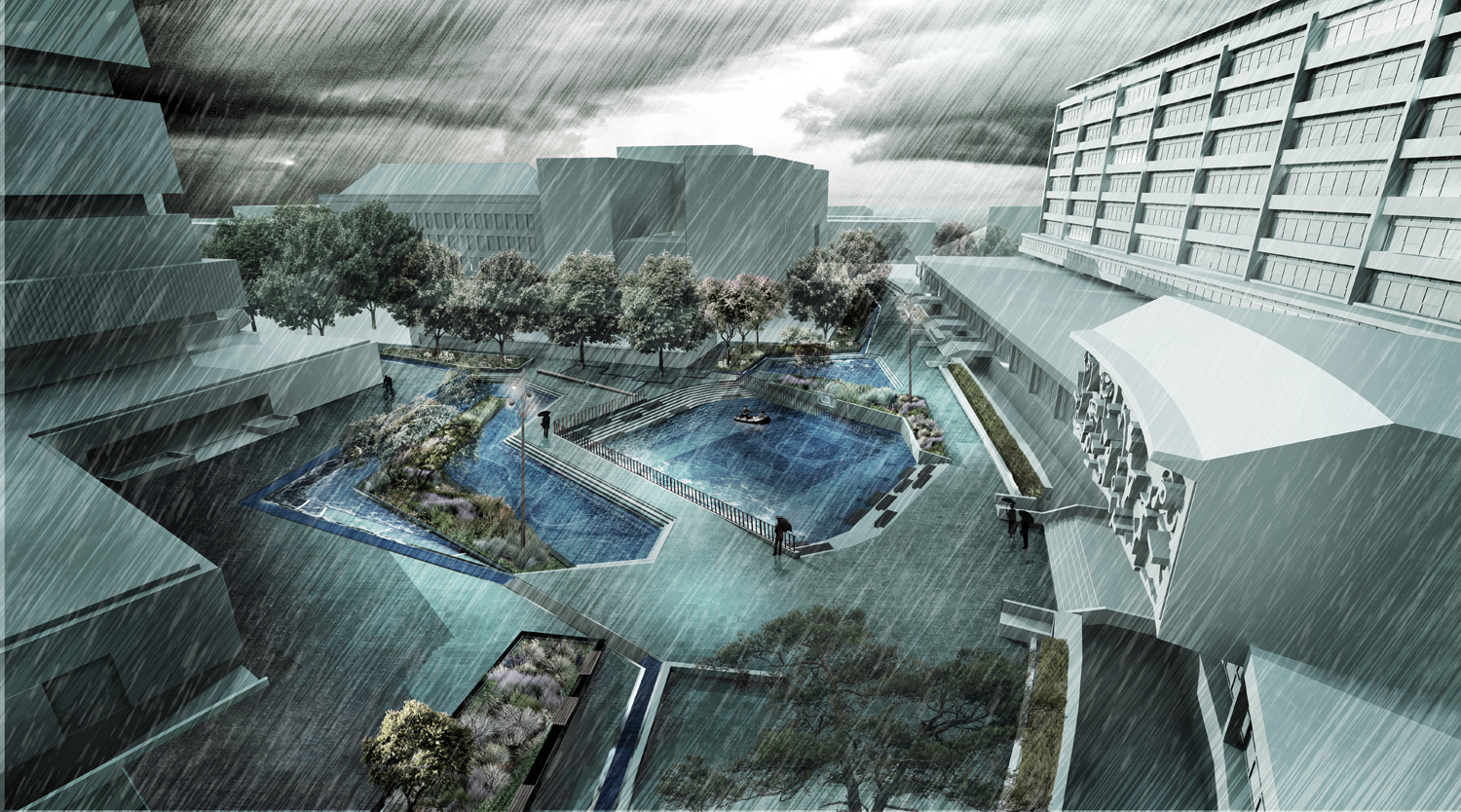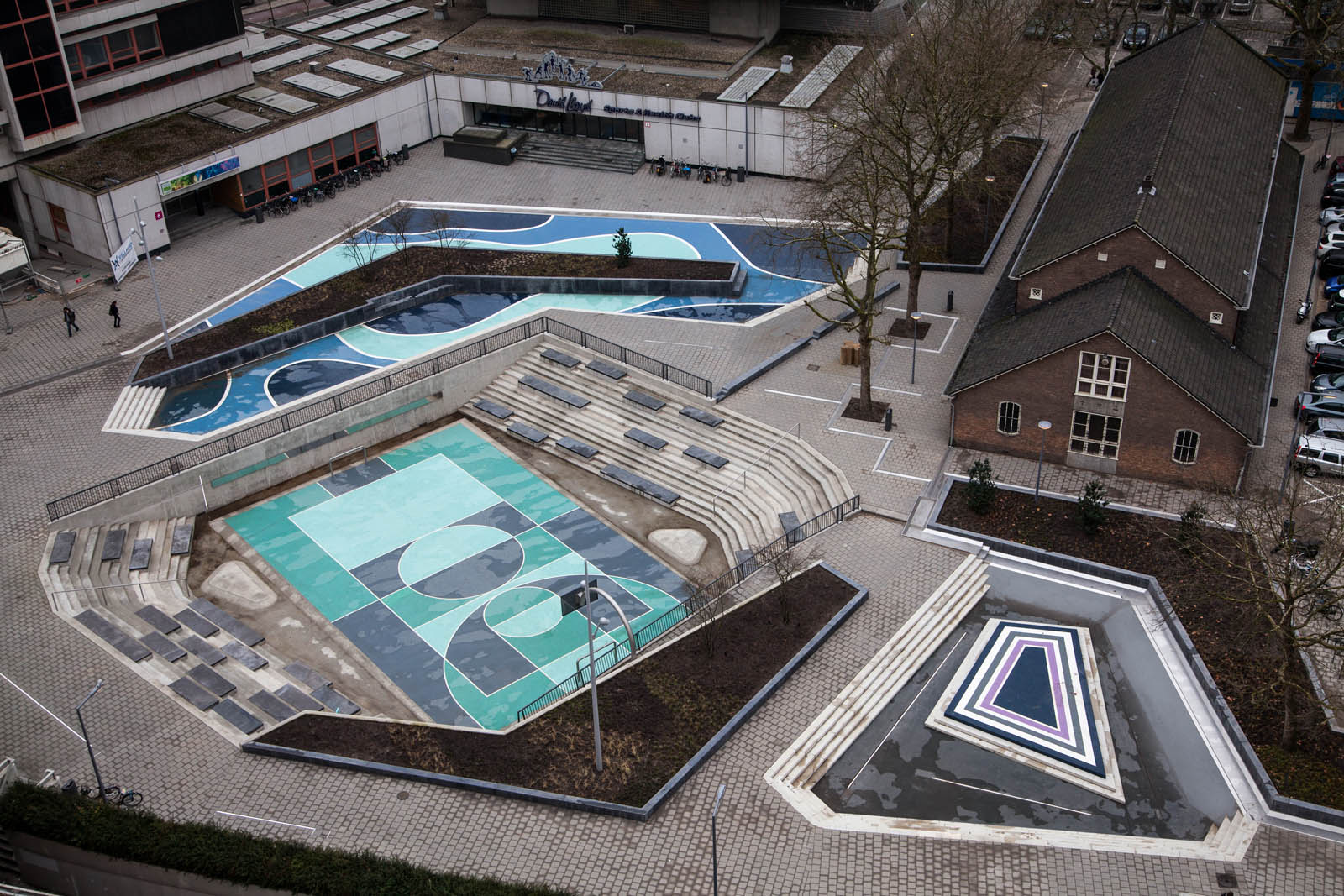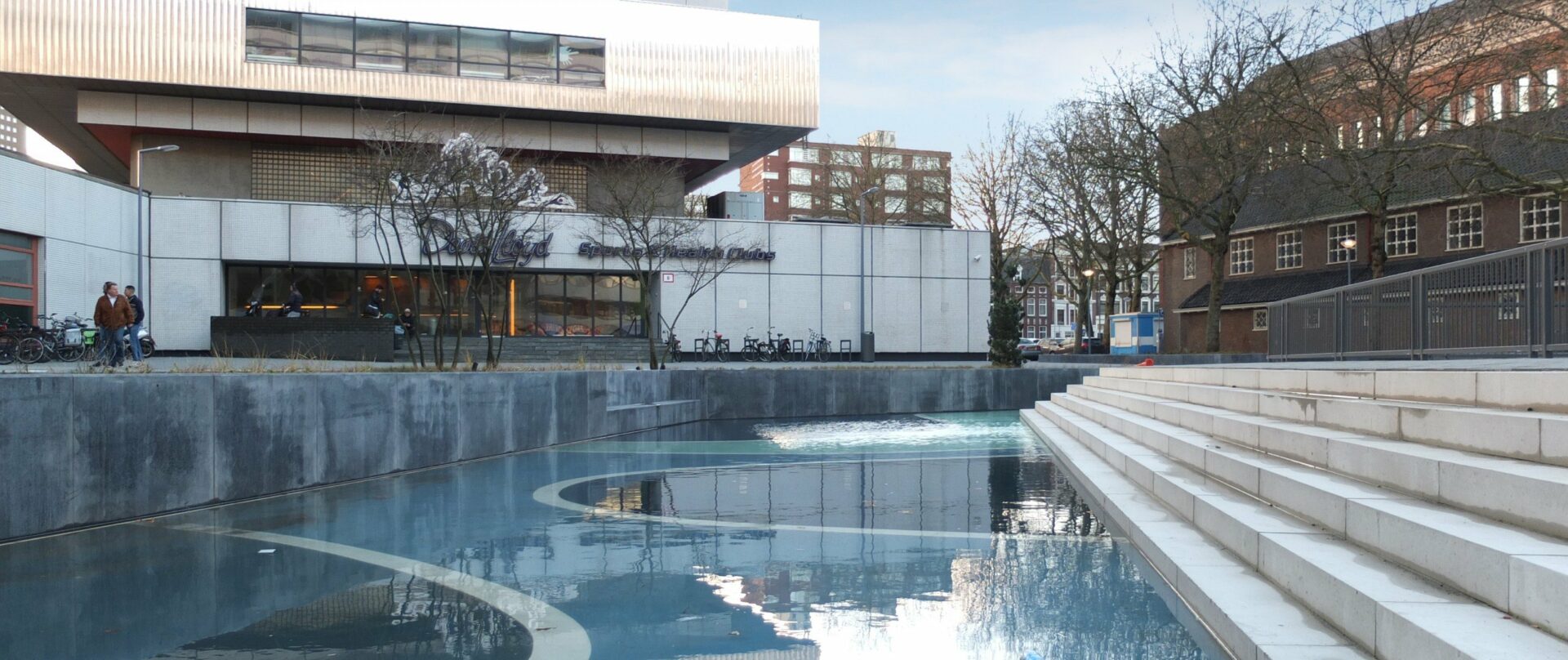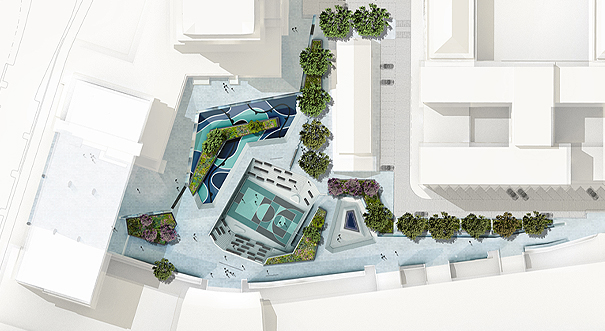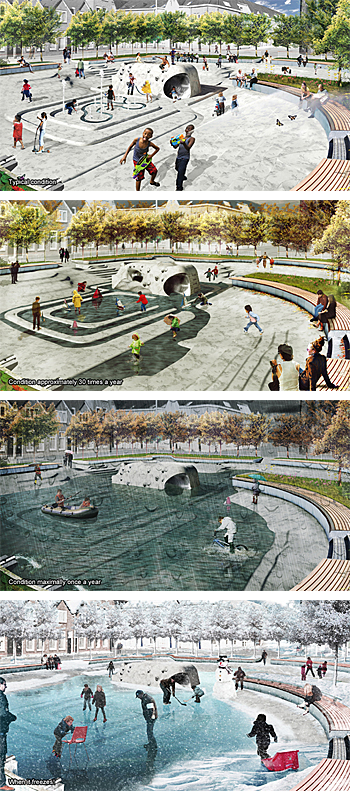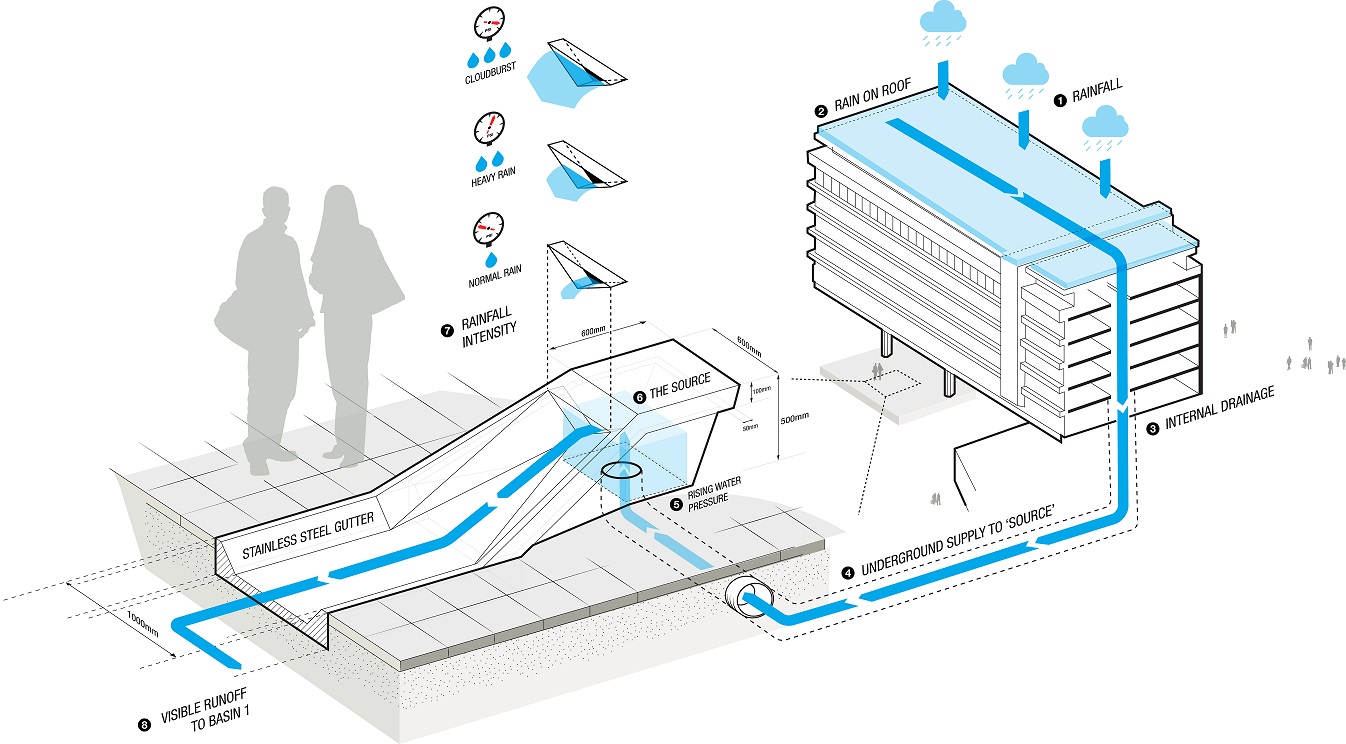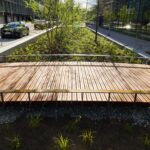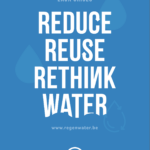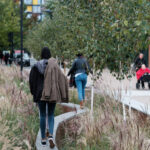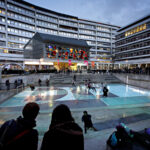BENTHEMPLEIN
ROTTERDAM, THE NETHERLANDS
DE URBANISTEN
2013
Benthemplein is a water square that combines water storage with the improvement of the quality of urban public space.
The water is channeled through stainless steel gutters into three basins. Two shallows collect water when it rains, while another deeper basin is reserved for overflowing from heavier storms. The water of two undeep bassins flow into an underground infiltration device. The ground water balance can cope with dry periods because it is kept at level. This idea helps to keep the city trees and plants in good condition which helps to reduce urban heat island effect.
The first undeep basin is fit for everybody who wants to see them playing. The second undeep basin is made as an island with a dance floor. The third basin is a place for football and is set up like a grand theatre to sit. With high grasses and wild flowers surrounding the trees, they made a concrete border at seating height to offer many informal places to relax.
Local planning will increase sewer capture at important points. This to reduce flooding. The SuDS is an important way of managing flows in the catchment. This is a key part of reducing the risk of flooding in the long term.
The water square can be understood as a twofold strategy. It makes money invested in water storage facilities visible and enjoyable. It also generates opportunities to create environmental quality and identity to central spaces in neighborhoods. Most of the time the water square will be dry and in use as a recreational space.

